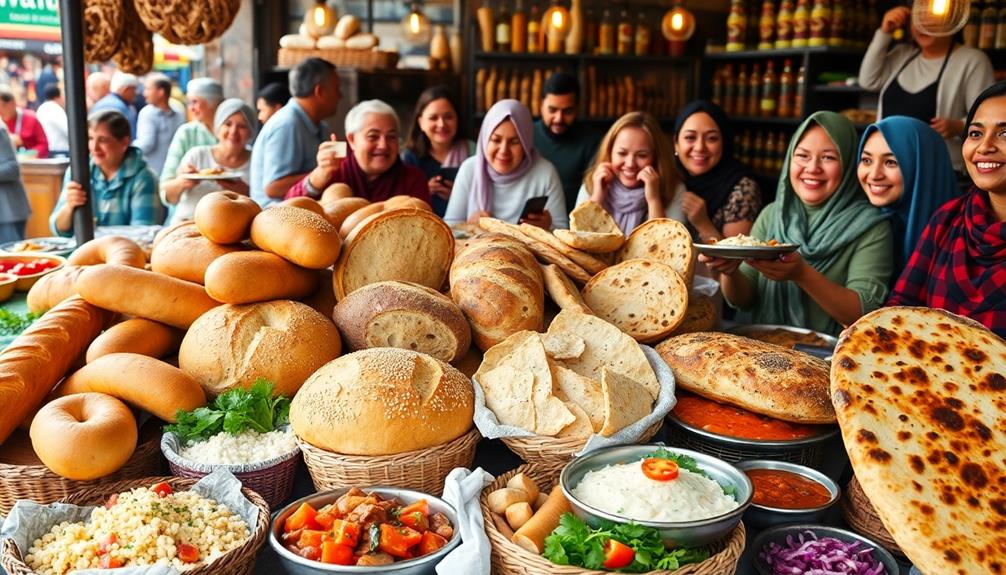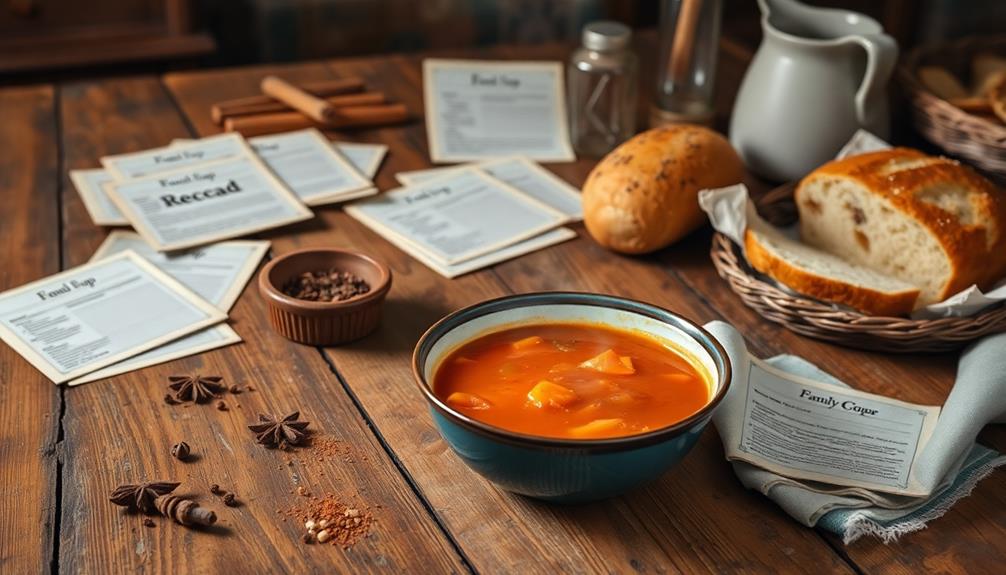Bread holds immense cultural significance across the globe, woven into traditions, diets, and social practices. You'll find sourdough in Greece symbolizing hospitality, while pita in the Middle East serves as a communal tool for sharing meals. Religiously, bread represents connection and life, seen in Christian rituals and Jewish celebrations. Economically, it reflects stability, with fluctuations affecting societies profoundly. In recent years, home baking trends have surged, highlighting a return to traditional practices and self-sufficiency. As you explore further, you'll uncover even more fascinating aspects of bread's role in cultures worldwide.
Key Takeaways
- Bread has been a staple food for over 14,000 years, symbolizing life and sustenance in various cultures, particularly in the Middle East and ancient Egypt.
- Different regions feature unique bread varieties, such as Greece's Horiatiko Psomi and Germany's 1,300 types, reflecting cultural diversity and culinary heritage.
- In many religions, bread holds significant symbolism, representing community, hospitality, and divine provision, as seen in Christianity, Judaism, and Eastern European traditions.
- Bread's economic impact is profound; it can indicate stability, influence prices, and has historically served as currency, emphasizing its societal importance.
- Contemporary trends show a resurgence in home baking and interest in artisan and gluten-free breads, highlighting evolving cultural practices and health consciousness.
Historical Origins of Bread
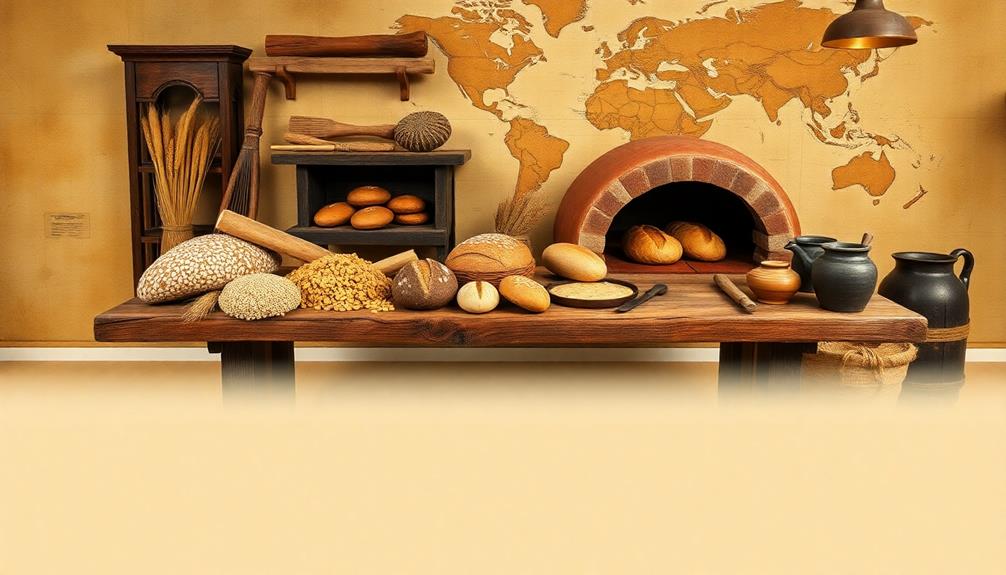
The fascinating journey of bread begins over 14,000 years ago with the Natufian culture in the Middle East. Here, archaeological evidence, such as burnt breadcrumbs, shows that early bread-making practices were already taking shape. The domestication of wheat and barley in the Fertile Crescent during the Neolithic era marked a significant milestone, establishing bread as a staple food across various cultures.
Charred bread crumbs discovered in Jordan, dating back 14,600-11,600 years, suggest that bread-making occurred even before agriculture began, highlighting its ancient roots.
As you explore the history of bread, you'll find that it held immense cultural significance, especially among the ancient Egyptians. They referred to bread as "aish," which means life, and it became a fundamental part of their diet, eaten by all social classes, including pharaohs.
Notably, similar to how bread has become a staple across cultures, traditional Brazilian dishes showcase the importance of staple foods in community and culinary practices.
The evolution of bread-making techniques, like the introduction of sourdough starters and freestanding ovens by the Greeks, reflects advancements in culinary practices throughout history.
This universal food hasn't just nourished people but also served as a symbol of community and sustenance, connecting generations through shared traditions and experiences.
Bread Varieties Worldwide

Across the globe, bread varieties reflect the rich tapestry of cultural traditions and culinary practices unique to each region. You'll find that different types of bread serve essential roles in daily life, showcasing the nutritional value and historical significance tied to great civilizations.
For instance, Greece is known for its traditional Horiatiko Psomi (Country Bread), which symbolizes hospitality and is often enjoyed with olive oil and cheese.
- Germany boasts over 1,300 varieties of bread, making it the leader in per capita bread consumption.
- In Latin America, traditional breads like sopaipillas, arepas, and chipa highlight the region's diverse culinary heritage.
- Asian staples such as Sangak, mantou, and chapati demonstrate various bread-making techniques across the continent.
- In the Middle East, pita bread acts as a pocket for fillings, embodying the communal eating traditions of the region.
In North Africa, injera serves not just as a dish but also as an eating utensil, showing its integral role in cultural dining experiences.
These bread varieties are more than just food; they reflect the cultural and religious practices that bind communities together. Whether it's a simple flatbread or a complex sourdough, each loaf tells a story of the people who cherish it.
Religious Symbolism of Bread
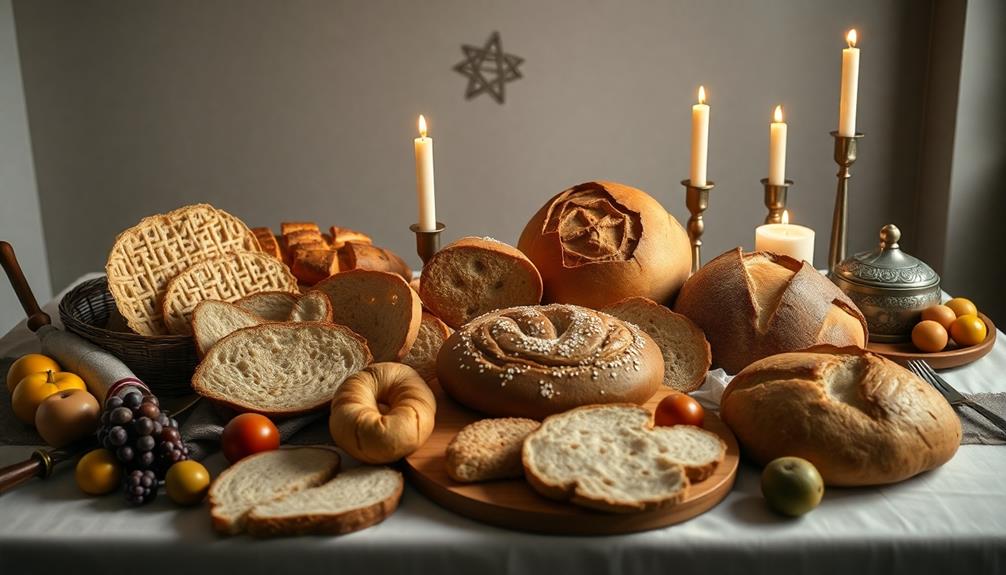
Bread carries profound religious symbolism in various traditions, serving as a bridge between the material and spiritual domains. In Christianity, you'll find that bread represents the Body of Christ during the Eucharist, a sacrament that's central to worship and community gatherings. This act of sharing bread reinforces bonds among believers, highlighting the importance of unity in faith.
Similarly, in Italian culture, traditional dishes like agnolotti often accompany communal meals, emphasizing the role of food in fostering connection among family and friends.
In Judaism, challah takes center stage during Shabbat and holidays, symbolizing divine provision and the sanctity of rest. During Passover, unleavened bread, or matzo, commemorates the Israelites' hasty escape from Egypt, emphasizing freedom and the significance of remembrance in Jewish culture.
Globally, bread plays an essential role in ceremonial offerings and rituals, often embodying hospitality and abundance. For instance, the Bread and Salt tradition in Eastern Europe signifies welcome and friendship, where guests are presented with these staples as tokens of sustenance and community connection.
Through these diverse traditions, bread transcends mere sustenance, becoming a powerful symbol that unites culture, community, and spirituality across various faiths and practices.
Economic Impact of Bread
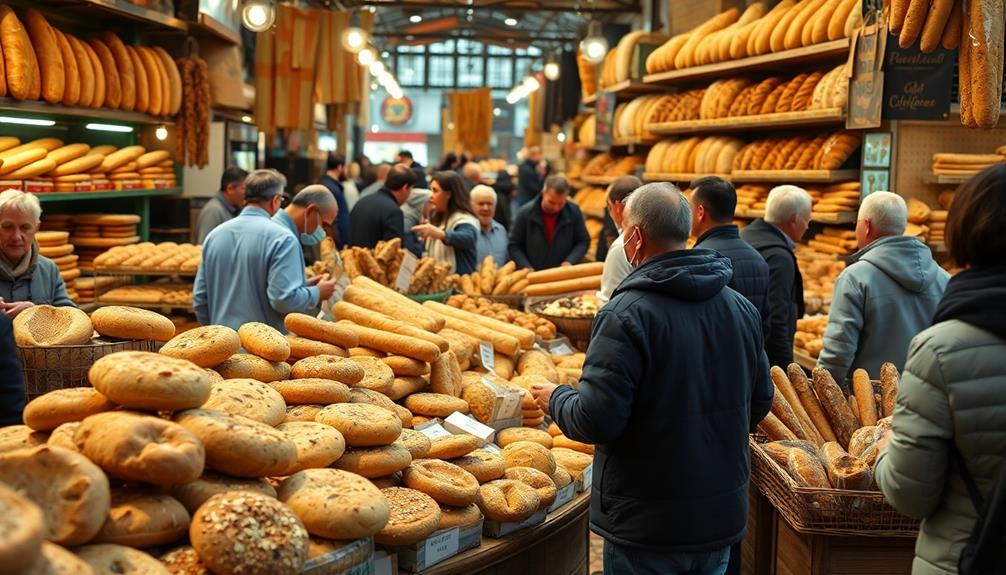
Throughout history, bread has shaped economies and influenced social structures in profound ways. As a staple food, its impact on your daily life and community is undeniable.
Bread's cultural significance goes beyond nourishment; it's an essential indicator of economic stability. When bread prices rise, it doesn't just affect your grocery bill—it can lead to civil unrest and social upheaval. For example, in some regions, the price of basic foods like rice or wheat can mirror the complexities of economic health, similar to how Red-Braised Pork Belly reflects cultural traditions during gatherings.
Consider these key points:
- In Ancient Egypt, bread and beer served as currency, ensuring fair nutrition for workers.
- The Roman Empire regulated bread prices; shortages often sparked riots, revealing bread's economic importance.
- Historical events, like the Flour War in France, show how rising bread prices can ignite significant unrest.
- For many families, bread consumes 60-80% of their income, highlighting its role in economic health.
When grain prices fluctuate, as seen during WWI, the consequences extend beyond the kitchen table. Bread is more than just loaves; it represents stability, unity, and sometimes, a catalyst for change.
Understanding this connection can deepen your appreciation for bread's place in both history and society today.
Contemporary Baking Trends
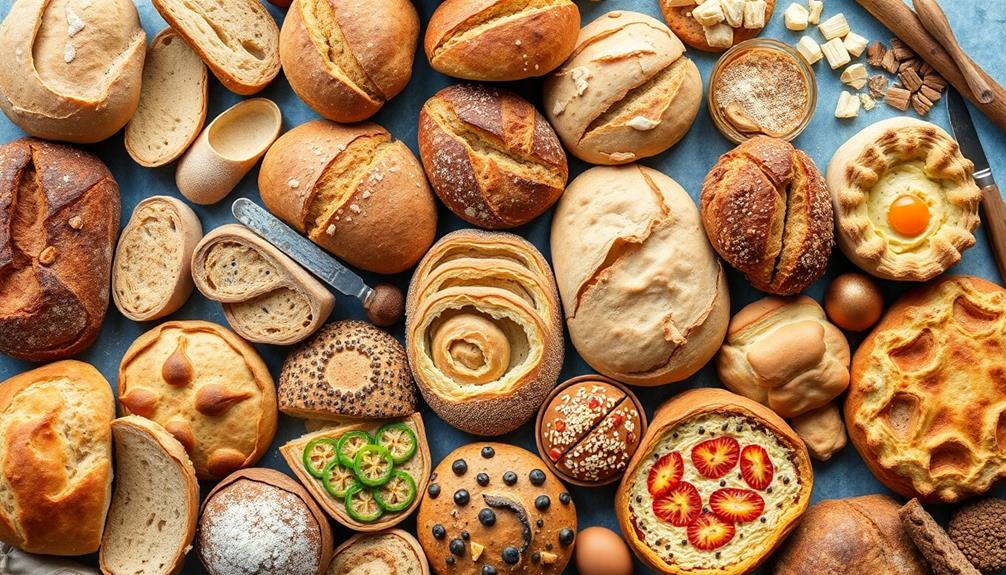
In recent years, home baking has experienced a dramatic revival, with a 400% increase in sourdough starter sales reported during the COVID-19 pandemic. As people sought stress relief and creative outlets, they turned to baking as a fulfilling hobby. Baking not only provided a sense of accomplishment, but also offered a delicious end result. However, this surge in home baking also brought attention to the science behind the craft, including how altitude impacts baking outcomes. Understanding how altitude affects baking can improve the quality of homemade baked goods, leading to more consistent and successful results.
This shift also sparked a trend towards self-sufficiency, with many making their own self-raising flour amid ingredient shortages. Additionally, the growing interest in fresh, seasonal ingredients has led many home bakers to incorporate local produce into their creations, such as using farm-to-table cooking techniques to enhance flavors.
You've likely noticed the growing interest in artisan and organic bread, with sales of organic options in the U.S. rising by 33% from 2015 to 2020. This reflects a demand for healthier and more sustainable choices.
Social media platforms like Instagram and TikTok have been instrumental in popularizing baking trends, leading to viral recipes and challenges that inspire a wider audience to try their hand at bread-making.
Moreover, the gluten-free movement has gained significant momentum, with the gluten-free bread market projected to reach $7.6 billion by 2026. This trend is driven by increasing health consciousness among consumers, who are keen to explore various alternatives.
Frequently Asked Questions
What Is the Significance of Bread in Different Cultures?
Bread's significance varies across cultures; you'll find it symbolizes sustenance, community, and tradition. It's often present in rituals, meals, and celebrations, reflecting local ingredients and practices that unite people through shared experiences and values.
What Is the Historical Significance of Bread?
Bread's historical significance lies in its role as a sustenance staple, a symbol of life, and a means of societal control. It's been essential in revolutions and religious rituals, shaping economies and cultures throughout time.
Why Is Bread a Staple Food in Countries Around the World?
You'll find bread's warm embrace in every corner of the globe. It fuels your day, binds meals together, and celebrates local flavors, making it a beloved staple that nourishes hearts and homes everywhere you go.
What Is the Purpose of Bread for the World?
Bread serves multiple purposes: it nourishes you, brings people together, and represents culture. You rely on its versatility for meals, while its presence in rituals and traditions deepens your connection to community and heritage.
Conclusion
In exploring the cultural significance of bread, you can see how it intertwines with history, spirituality, and economics across the globe. Did you know that over 20,000 different types of bread exist worldwide? This staggering number highlights bread's versatility and its role in diverse cuisines. As you break bread with others, remember the rich stories and traditions each loaf carries, connecting people and cultures throughout history. Bread isn't just food; it's a universal symbol of community.
